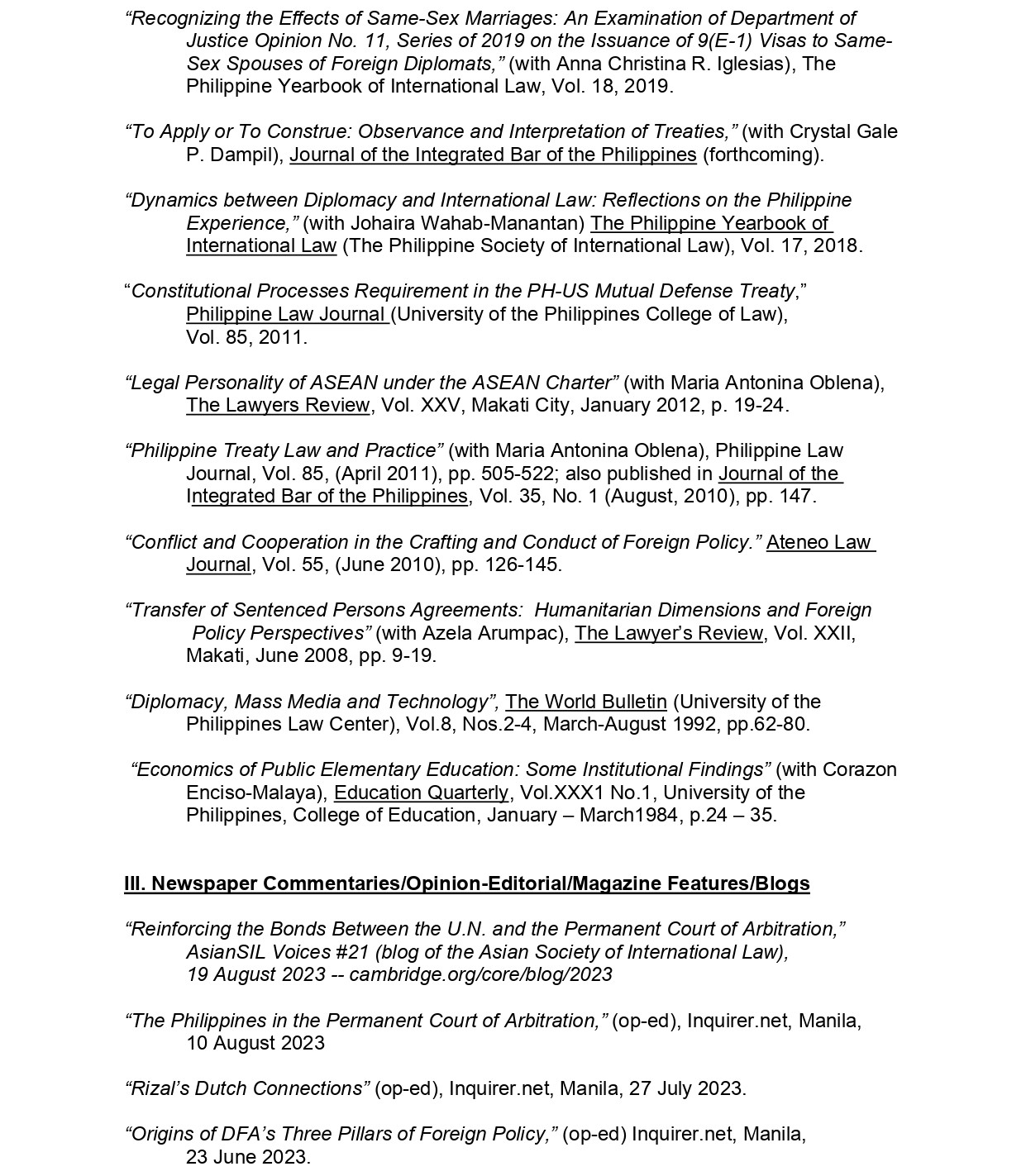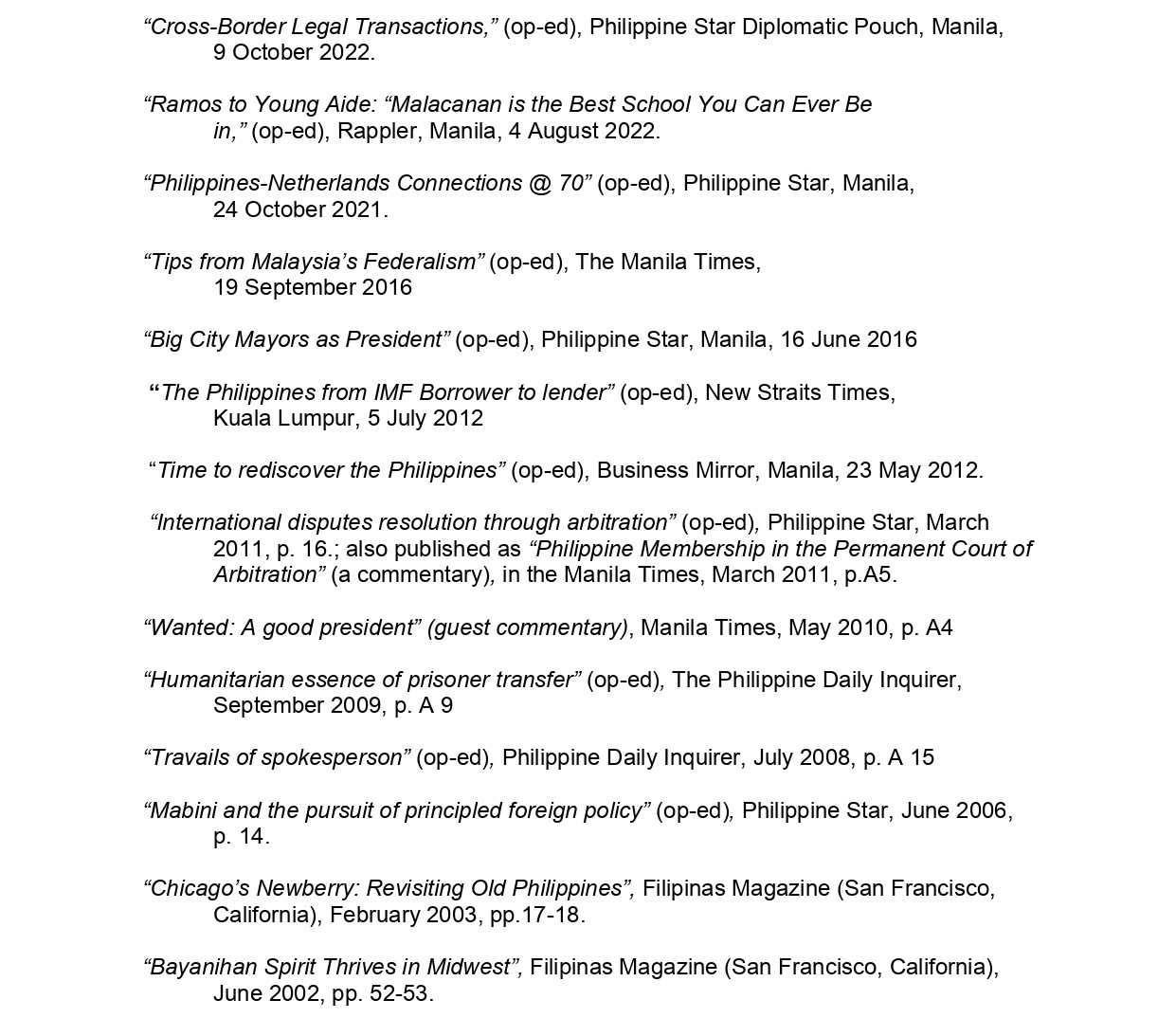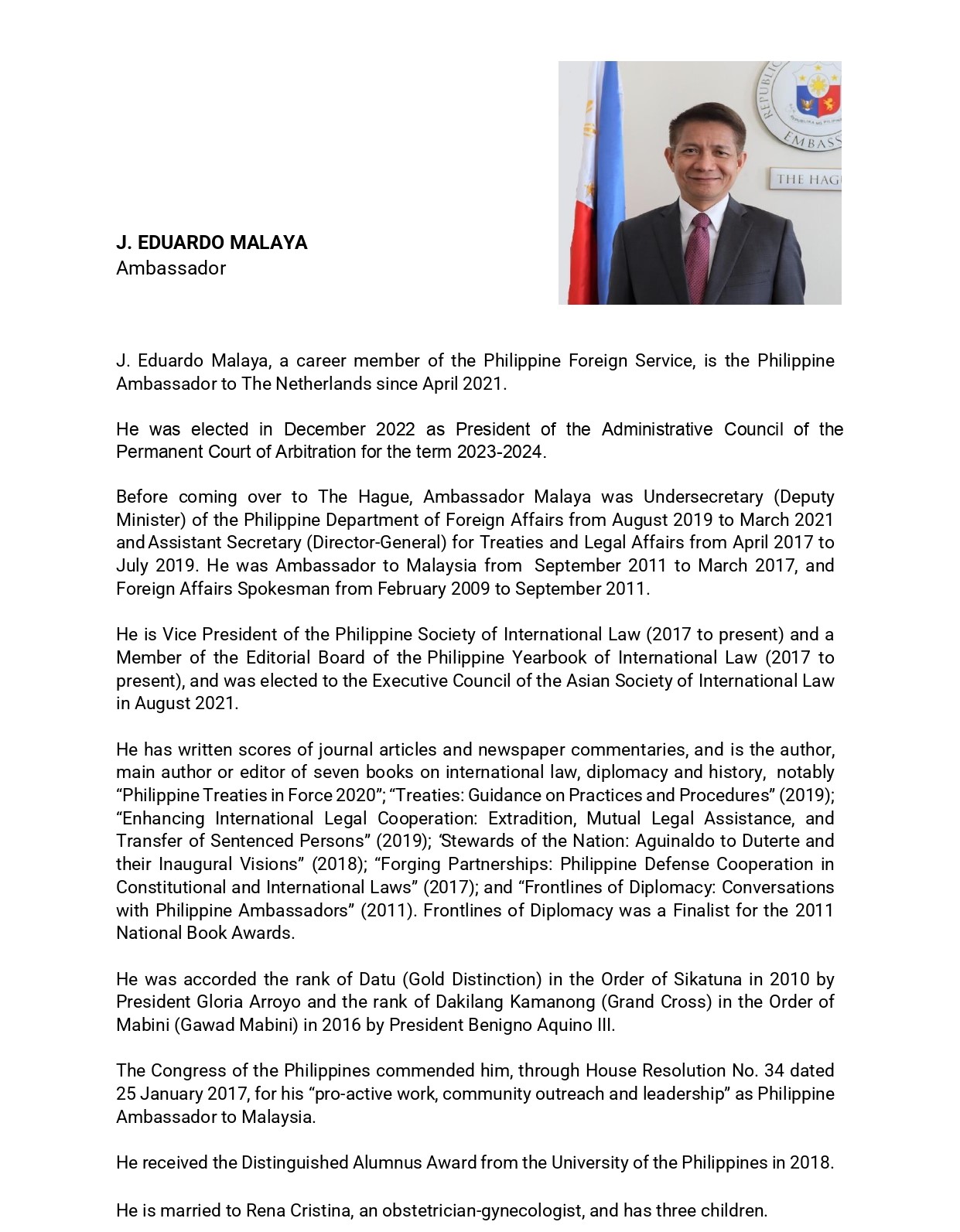
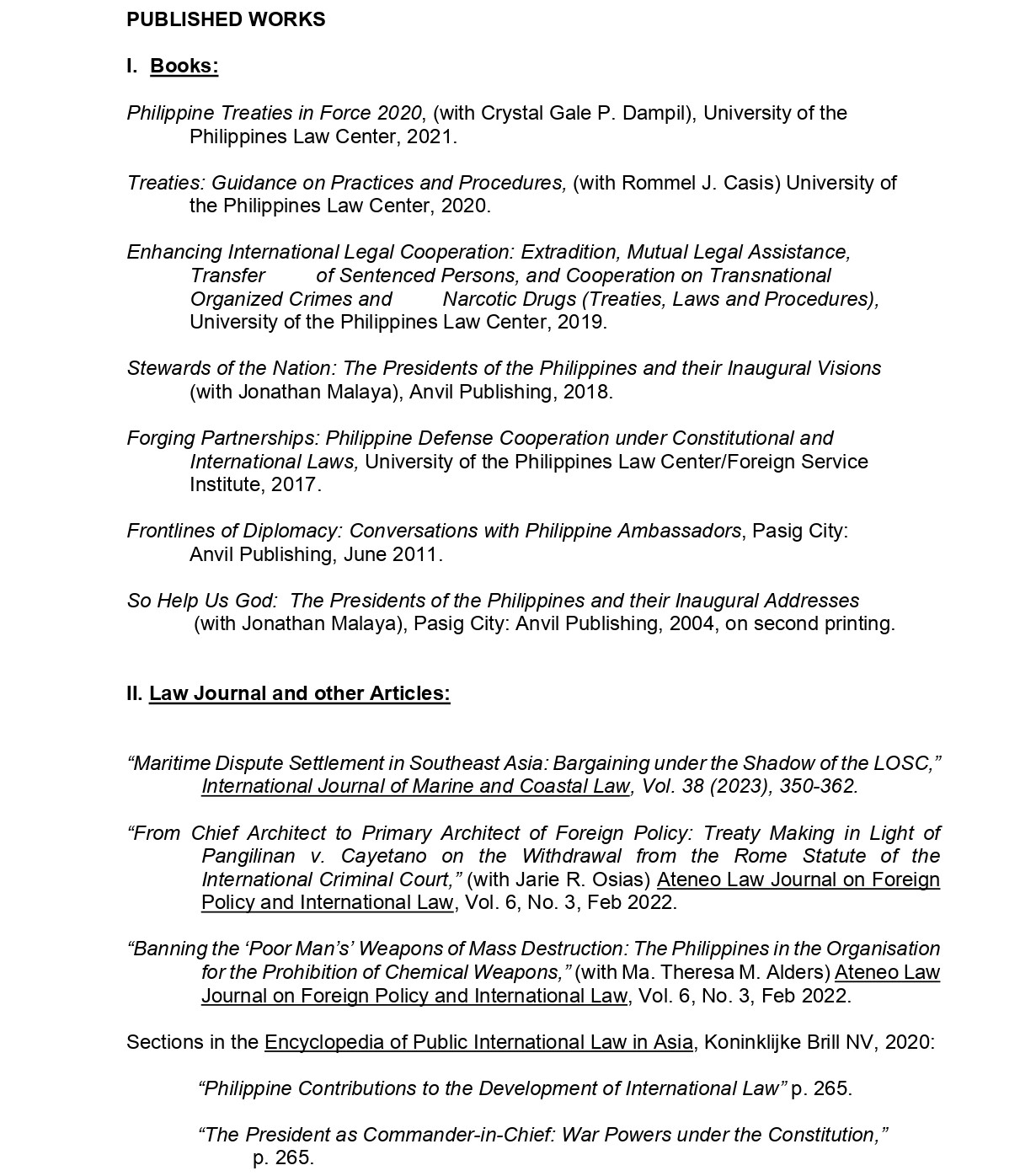
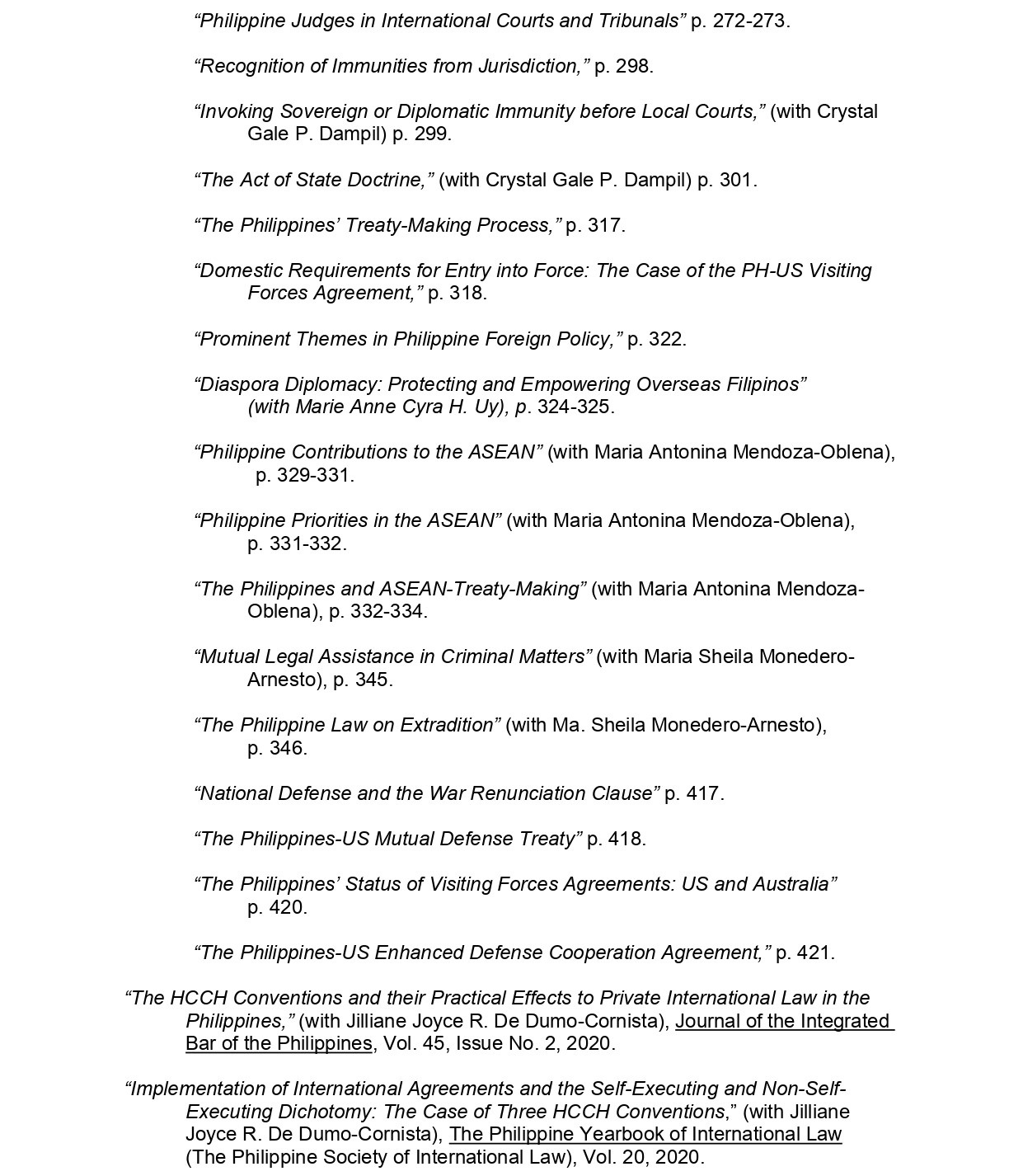
RIZAL'S DUTCH CONNECTIONS
J. Eduardo Malaya - Philippine Daily Inquirer / 05:03 AM July 27, 2023
A bust of Jose Rizal was unveiled on July 4 in the courtyard of the Philippine Embassy in The Hague, with the Knights of Rizal’s supreme commander flying in from Manila.
There are an increasing number of monuments and markers overseas that honor our national hero, from Madrid to Chicago and Hong Kong, thanks to his prodigious accounts of the places he had visited in his lifetime. It is not clear if Rizal had ever set foot on Dutch soil, unlike Ghent in nearby Belgium, where his novel “El Filibusterismo” was published in 1891.
Why then this monument in the Netherlands?
For starters, Rizal wrote of the young Dutch girls—sisters—he had met on the sea voyage from Singapore to Marseilles. He also wondered about possible materials in Leiden and Utrecht that could shed light and give more information about early Philippines, in the same way he used annotations to Antonio de Morga’s 1609 “Sucesos de las Islas Filipinas” to correct misimpressions about Filipinos and their culture before the Spaniards came.
Rizal had planned to meet Leiden University’s linguist and Orientalist, professor Hendrik Kern, as well. As a master of languages, Rizal undoubtedly understood Dutch. As he wrote to his friend Dr. Ferdinand Blumentritt in April 1890: “I am studying Dutch and searching the bookstores to complete my collection.”
More significantly, Rizal admired the Dutch writer Eduard Douwes Dekker whose novel “Max Havelaar: Or the Coffee Auctions of the Dutch Trading Company,” written in 1860 under the pen name Multatuli, made a deep impression on him when he was writing “El Filibusterismo.”
In his letter to Blumentritt dated Dec. 6, 1888, while in London, he wrote “the book by Multatuli that I will send you as soon as I get it, is very interesting. Without a doubt it is superior to my book. But since the author is a Dutchman, his attacks are not as violent as mine. It is more refined and more artistic, but only shows one side of the life of the Dutch in Java.”
The two writers had similar views on the harsh realities of colonialism and wanted to expose them—Dekker on his country’s rule in the East Indies (now Indonesia), Rizal on the Spaniards’ rule in the Philippines. Dekker’s earlier observations about colonialism affirmed Rizal’s own. Max Havelaar tells the story of a Dutchman who fights against corrupt Dutch colonial policies. Similar to Rizal’s character Crisostomo Ibarra/Simoun, Havelaar is an idealistic young man who works for the Dutch colonial administration in Java. Although his Dutch colleagues want him to control the natives and exploit them for their labor, Havelaar would like to reform the system and help them prosper.
Dekker however wrote: “My presentation is chaotic, … disjointed, … striving for effect, … the style is bad, … the writer lacks skill, … no talent, … no method, … Right … right … all right! But the Javanese is maltreated! For the substance of my work is irrefutable!”
Though his novel “Max Havelaar” was published over a century and a half ago, Dekker remains one of the most celebrated Dutch writers. Historians and critics credit the book for radically overhauling Dutch colonial policy in the Dutch East Indies in the late 19th century. A museum dedicated to Dekker’s writings and thoughts can be found in Amsterdam.
The issue of colonialism is not something relegated to the past among the Dutch. On July 1, King Willem-Alexander apologized for the practice of slavery in the Dutch colonies, including Indonesia. He said, “At a certain point you have a moral duty to act. All the more so considering that here, in the European Netherlands, slavery was strictly forbidden. What was thought normal in the colonies overseas—practiced on a large-scale and encouraged, in fact—was not allowed here … I ask forgiveness for the clear failure to act in the face of this crime against humanity.”
Credit the Dutch for the courage, fortitude, and sense of justice to honestly look at their past and make amends. Dekker had passed on before Rizal’s time in Europe, but they shared similar aspirations for oppressed peoples, with the writer Peter Schreurs describing Dekker as Rizal’s “soul brother.”
Sept. 18 marks the 132nd anniversary of the publication of “El Filibusterismo.” It is fitting that a Dutch translation of “El Filibusterismo” was undertaken by writer, translator, and publisher Gerard Arp in 2020, which has made the novel more accessible to the Dutch people. Documenting the Rizal-Dekker connection is the major reason behind the installation of the Rizal bust in The Hague. It is a meaningful people-to-people link between Filipinos and the Dutch.
—————-
J. Eduardo Malaya is Philippine ambassador to the Netherlands and editor of “Philippine Treaties in Force 2020” and “Frontlines of Diplomacy: Conversations with Philippine Ambassadors.”
PHILIPPINES-NETHERLANDS CONNECTIONS @70 | PHILIPPINE STAR, OPINION
2021 is an auspicious year for the Philippines and the Netherlands as it marks the 70th anniversary of the establishment of their diplomatic relations. Most Filipinos have long been familiar with Dutch products without much thought about their origin, such as buying Dove, Surf and other Unilever items or filling up for gasoline at Royal Dutch Shell stations.
Even at this time of pandemic when economic activities have slowed down, dredger vessels from the Royal Boskalis Westminster NV, one of the world’s leading dredging companies, are busy in the Manila Bay undertaking land reclamation and development for the new international airport being developed by the San Miguel Aerocity Inc. in Bulacan. As the second international gateway to Metro Manila, it will unlock further opportunities and boost growth north of the capital region.
Having been in The Hague for the last seven months, I have been surprised to learn of numerous connections between our two countries and peoples, many going a long way back. The cherished queso de bola that Filipino families cannot go without as part of Christmas noche buena fare turned out not to be Spanish but Edam cheese from the Netherlands.
Our devotion to the Our Lady of La Naval de Manila, which is enshrined at Quezon City’s Santo Domingo Church, arose from the anxieties over the forays in 1600 by a Dutch fleet under Olivier van Noort, who was in search of spices and conquests. Repulsed by Spanish and Filipino forces, van Noort managed to return to Rotterdam and when he did so, became the first Dutch to circumnavigate the world.
Rizal’s writing of the El Filibusterismo was influenced by his reading of the 1860 novel Max Havelaar by Eduard Douwes Dekker on the similarly oppressive colonial conditions in the then Dutch East Indies, now Indonesia. Dutch and Belgian priests and nuns came in at the turn of the 20th century when Spanish religious had to leave, and through the parishes and schools they ran, helped shape hearts and minds.
Bilateral relations at the present time are based on more practical foundations. The Netherlands has consistently been among the five top investor countries in the Philippines, and at $245 million in 2020, was the number one among the 28 European Union (EU) countries. Philippine exports to the Netherlands was $1.9 billion in 2020 and growing.
As countries with significant maritime interests, cooperation in the area of maritime sphere is robust, with some 22,000 Filipino seafarers onboard Dutch-flagged vessels that ply the waters of the world. Some 41,313 Dutch tourists visited and enjoyed our pristine beaches and shopping centers in 2019, and we would like to see them back once leisure travels normalize.
We are fortunate to have active collaborators in keeping business-to-business engagements strong. The Makati-based Dutch Chamber of Commerce of the Philippines has been proactive, serving not only as a valuable platform for collaboration and engagements with Philippine agencies and other companies but also in encouraging more Dutch companies to do business in the Philippines.
In mid-November, in cooperation with the European Chamber of Commerce of the Philippines, they will conduct an investment seminar on opportunities in Davao. Its counterpart, the Philippine-Netherlands Business Council, has commenced planning of activities for the months ahead.
With refreshed outlook and to properly mark the 70-year milestone in relations, the Philippines and Netherlands got together in June 2021 for a Bilateral Consultation meeting, producing a joint work program with emphasis on cooperation in trade and investments, water management, maritime matters, agriculture and science and technology.
All these come timely with the issuance by the Netherlands in November 2020 of its “Indo-Pacific: Guidelines for strengthening Dutch and EU cooperation with partners in Asia,” which was followed in September this year by the European Union’s “Strategy for cooperation in the Indo-Pacific.” These policy papers are clear signals for a significant, long-term and cooperative engagement with our region. The Philippines has a big role in this region-to-region interface as coincidentally it recently assumed the role of country coordinator of ASEAN-EU relations up to 2025.
Indeed, as the Netherlands and the EU have realized, the Indo-Pacific region has become the world’s strategic and economic center of gravity, with ASEAN in the middle of it.
It is with this outlook that the Philippine embassy, in partnership with the Ateneo de Manila University, the Netherlands embassy in Manila and the Foreign Service Institute, is hosting the webinar “Philippines-Netherlands Connections @70: Reconstructing History and Forging Ahead” on Nov. 9-10 (https://sites.google.com/dfa.gov.ph/fildutchsolidarity70/).
It will feature senior government officials, business leaders, historians and other distinguished personalities with the aim of assessing the relations and contributing to a roadmap to strengthen and scale up cooperation. The book “Crossroads,” a compendium of the bilateral agreements signed from 1946 up to the present, will also be launched during the webinar.
At around the time when Spanish-held Manila was wary of any sightings of Dutch ships, a different, more congenial interaction was taking place down south. Dutch VOC trading vessels from Ternate in the Moluccas came to trade with the Maguindanao sultanate in Cotabato. After sailing for five to seven days depending upon the winds, they would drop anchor in Morro Bay and be warmly received by Sultan Kudarat and his court. Accounts say that these arrangements lasted for two centuries during the reign of eight sultans. Indeed, mutually beneficial relations between our two peoples have gone for ages and have deep roots.
As we mark 70 years of diplomatic relations, we say proost! Mabuhay!
* * * *
J. Eduardo Malaya is the Philippine Ambassador to the Netherlands.
Source: https://www.philstar.com/opinion/2021/10/24/2136225/philippines-netherlands-connections-70

